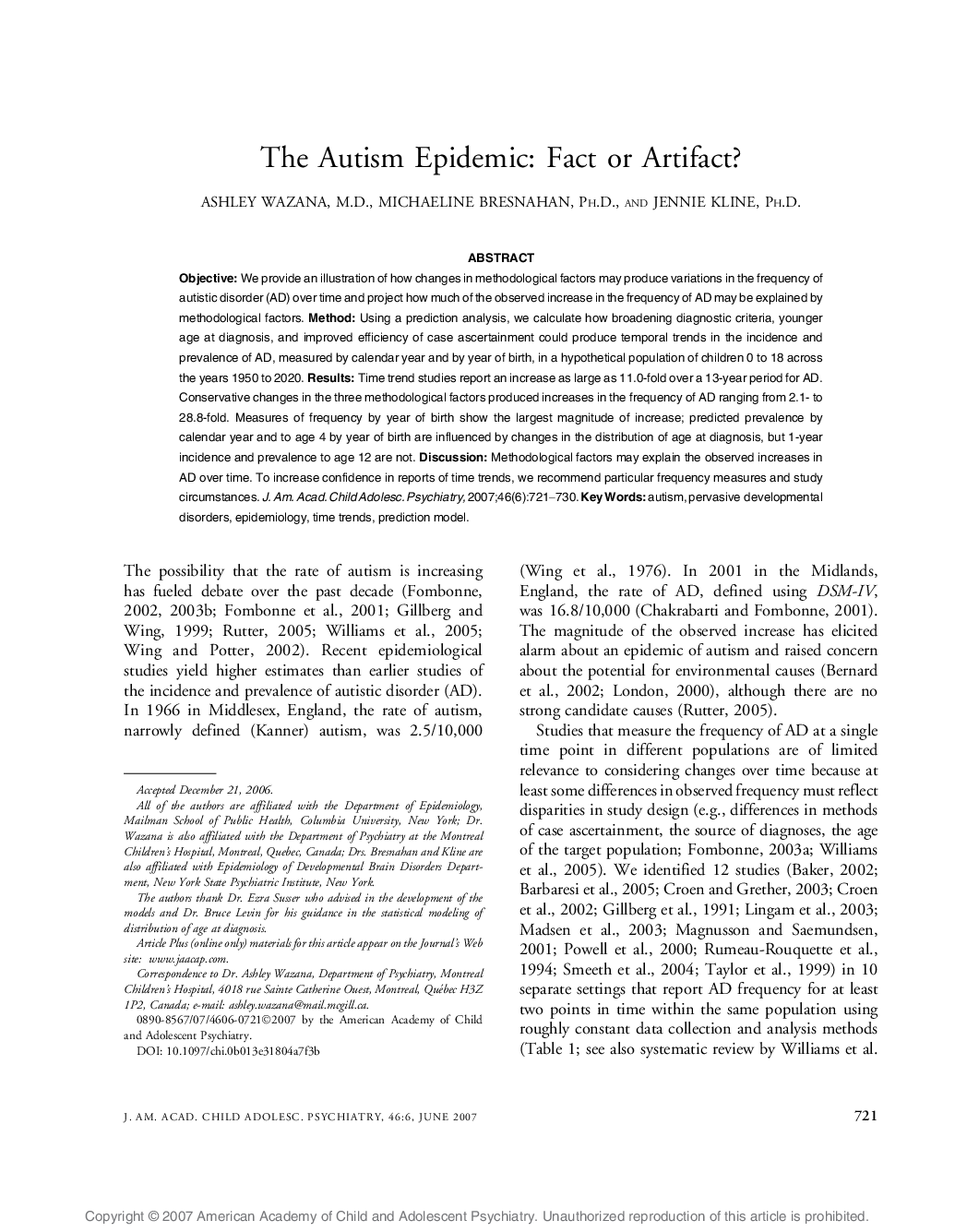| Article ID | Journal | Published Year | Pages | File Type |
|---|---|---|---|---|
| 324968 | Journal of the American Academy of Child & Adolescent Psychiatry | 2007 | 10 Pages |
ABSTRACTObjectiveWe provide an illustration of how changes in methodological factors may produce variations in the frequency of autistic disorder (AD) over time and project how much of the observed increase in the frequency of AD may be explained by methodological factors.MethodUsing a prediction analysis, we calculate how broadening diagnostic criteria, younger age at diagnosis, and improved efficiency of case ascertainment could produce temporal trends in the incidence and prevalence of AD, measured by calendar year and by year of birth, in a hypothetical population of children 0 to 18 across the years 1950 to 2020.ResultsTime trend studies report an increase as large as 11.0-fold over a 13-year period for AD. Conservative changes in the three methodological factors produced increases in the frequency of AD ranging from 2.1- to 28.8-fold. Measures of frequency by year of birth show the largest magnitude of increase; predicted prevalence by calendar year and to age 4 by year of birth are influenced by changes in the distribution of age at diagnosis, but 1-year incidence and prevalence to age 12 are not.DiscussionMethodological factors may explain the observed increases in AD over time. To increase confidence in reports of time trends, we recommend particular frequency measures and study circumstances.
